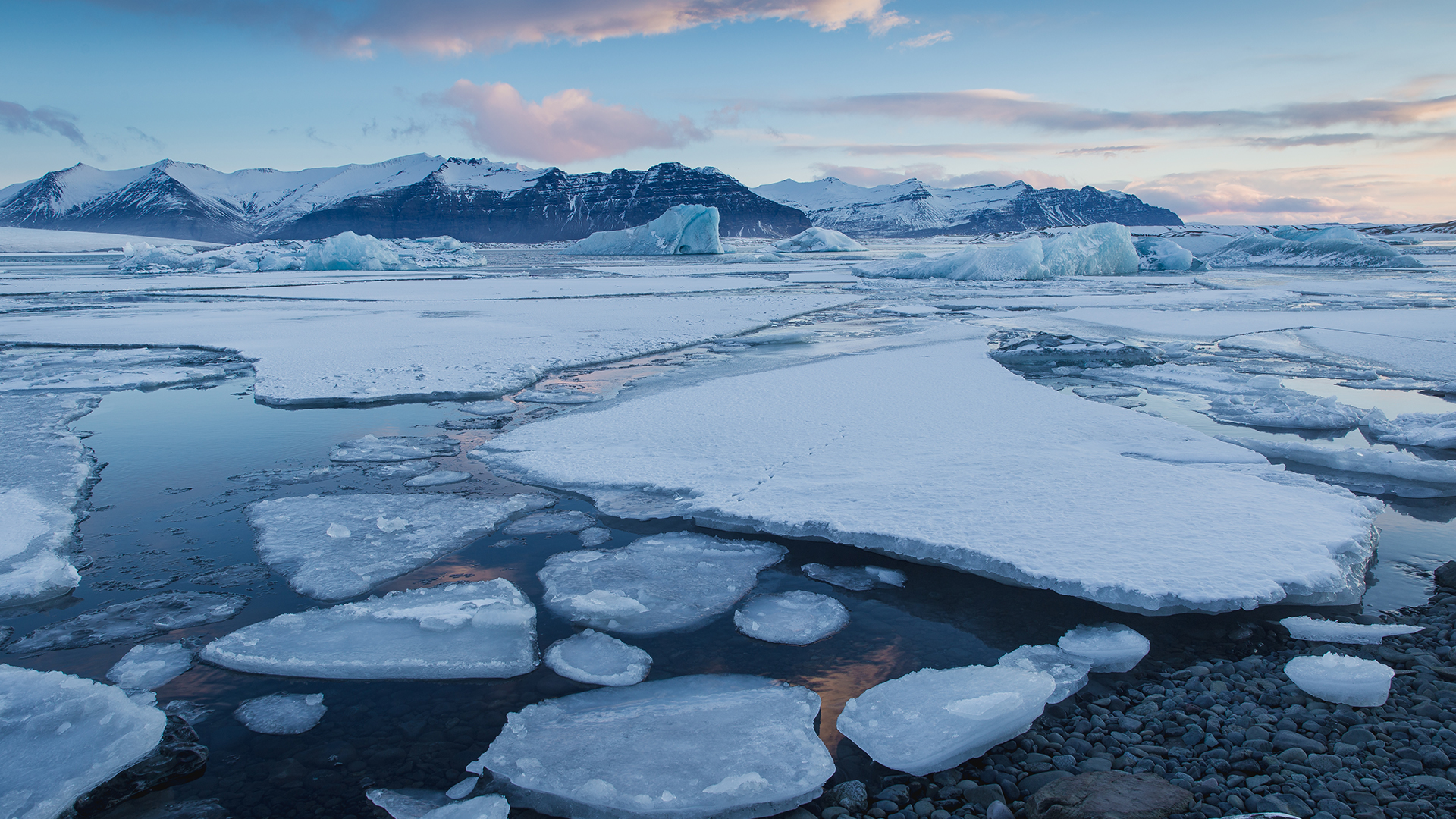The 1st Americans may have arrived by a sea ice 'highway'
During the last ice age, the first people to reach the Americas may have traveled from Asia along a sea ice "highway."

During the last ice age, sea ice may have provided an ancient "highway" for the first humans to reach the Americas, researchers say.
The finding — that the first Americans may have trekked upon this highway in addition to boating alongside the coast — provides another puzzle piece for how humans managed to cross Beringia, the landmass that once linked Asia with North America. The research was published in 2023 in the journal PNAS and originally focused on when sea currents along Beringia were passable by watercraft; during a new presentation of their findings on Dec. 15 at the annual meeting of the American Geophysical Union in San Francisco, the team highlighted the sea ice's importance.
There are two main scenarios for how people may have first migrated to the Americas. The older idea suggested that people made this journey when Beringia was relatively free of ice. However, a growing body of evidence suggests that travelers made their way on watercraft along the Pacific coasts of Asia, Beringia and North America before 15,000 years ago, when giant ice sheets would have made an overland journey extremely difficult. This "kelp highway" may have supplied bountiful goods in coastal waters.
Finding out which of these scenarios might be correct has long proved challenging, largely because many of the most likely locations of human occupation during the migration are now underwater in the Bering Sea," Jesse Farmer, a paleoceanographer at the University of Massachusetts Boston who was not involved with the new research, told Live Science in an email. "If finding a suitable archaeological site on land is like finding a needle in a haystack, in Beringia it's like finding a needle in a haystack that is buried under 150 feet [45 meters] of ocean water."
Archaeologists have found evidence of coastal settlements in western Canada dating from as early as 14,000 years ago. However, a 2020 study suggested that fresh water from melting glaciers at the time might have created a strong current that would have made it difficult for people to travel along the coast.
Related: Some of the 1st ice age humans who ventured into Americas came from China, DNA study suggests
To get a better idea of the ocean's conditions during these potentially critical windows of human migration, Summer Praetorius, a paleoceanographer at the U.S. Geological Survey, and her colleagues investigated ocean sediments along the North American Pacific coast. Much of the data came from tiny fossils of plankton; their abundance and chemical makeup can help scientists deduce ancient ocean temperatures, salinity and sea ice cover.
Sign up for the Live Science daily newsletter now
Get the world’s most fascinating discoveries delivered straight to your inbox.
The research team's climate models revealed that 20,000 years ago, ocean currents were more than twice as strong as they are today because of glacial winds and lower sea levels during the height of the Last Glacial Maximum, the coldest part of the last ice age. Although not impossible to paddle against, these conditions would have made traveling southward by boat very difficult, Praetorius said in a statement. Such conditions may have lasted 1,000 to 2,000 years.
"This is a very clever combination of past environmental data and cutting-edge ocean modeling," Farmer said.
The scientists also found that much of the region was home to sea ice during the winter until about 15,000 years ago. This opens up the possibility that instead of paddling against these powerful currents, ancient migrants to the Americas may have used sea ice as a platform to walk on, Praetorius said.
Modern-day Arctic people travel along sea ice on dog sleds and snowmobiles. Early migrants to the Americas also may have used a sea ice highway to get around and hunt prey, slowly making their way into North America in the process, Praetorius noted.
In addition, the climate data suggested that conditions along the coastal route might have supported migration between 24,500 and 22,000 years ago, as well as between 16,400 and 14,800 years ago, possibly with the aid of winter sea ice.
"These open periods from the climate record do overlap well with footprints found in New Mexico [that are] about 23,000 years old," John Jaeger, a marine geologist at the University of Florida who did not participate in this study, told Live Science. These findings suggest that "humans migrating through this area were very adaptable to rapidly changing conditions."
All in all, "the million-dollar question still remains: when, how, and why did humans move from Asia to North America?" Farmer said. "We need to compile insights from across research approaches and ways of knowing. The study by Praetorius and others is an excellent step in this direction."











